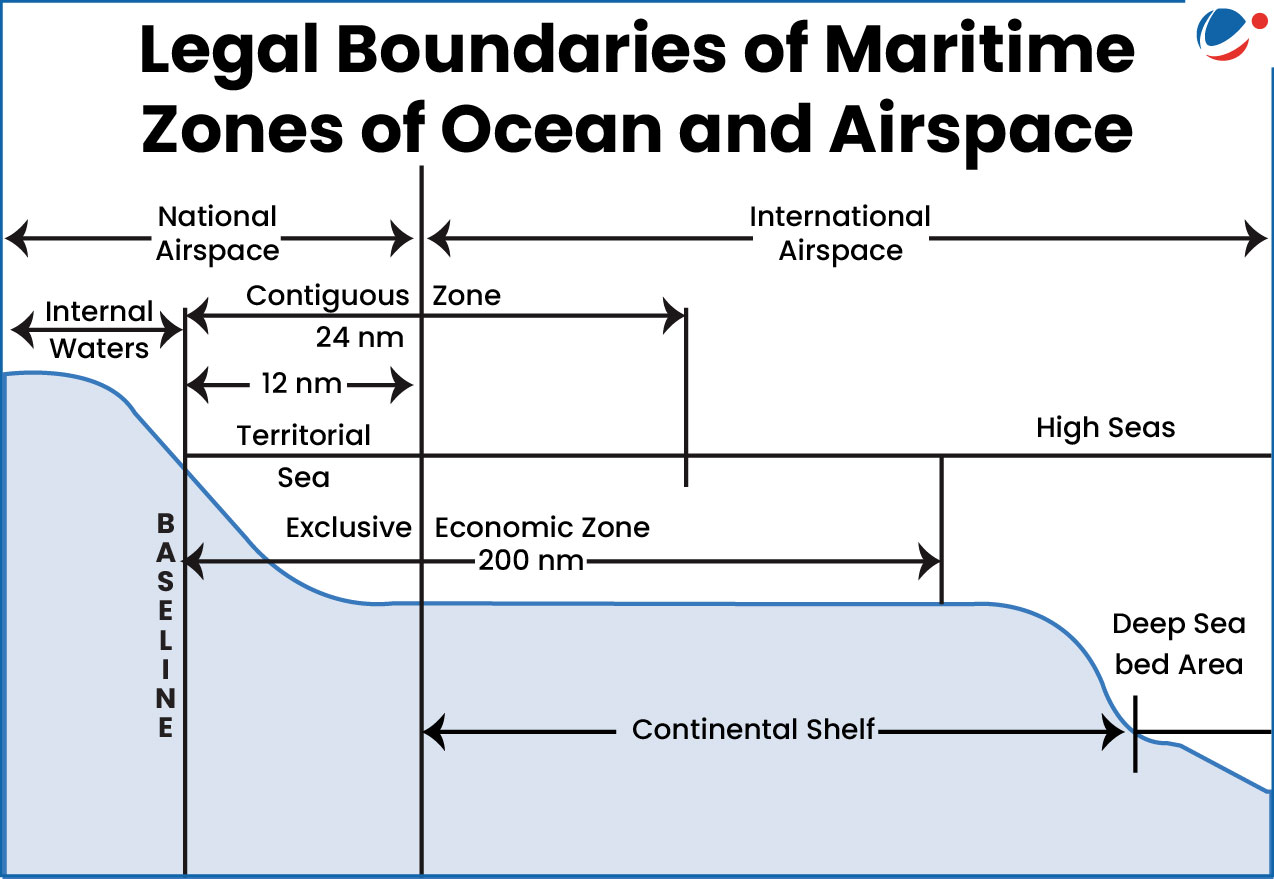Why in the News?
Treaty for the Conservation and Sustainable Use of Marine Biological Diversity of Areas Beyond National Jurisdiction (BBNJ agreement) also known as the High Seas Treaty is set to enter into force after ratification by 60th country.
About BBNJ Agreement
- BBNJ treaty is aimed at ensuring the conservation and sustainable utilisation of marine biological diversity in areas beyond national jurisdiction, i.e. area beyond economic exclusive zone.
- It is an international treaty under the United Nations Convention on the Law of the Sea (UNCLOS).
- The BBNJ Agreement will be the third implementation agreement under UNCLOS, others are
- 1994 Part XI Implementation Agreement (which addresses the exploration and extraction of mineral resources in the international seabed area) and
- 1995 UN Fish Stocks Agreement (which addresses the conservation and management of straddling and highly migratory fish stocks).
- The BBNJ Agreement will be the third implementation agreement under UNCLOS, others are
- The Agreement also establishes a funding mechanism and sets up institutional arrangements, including a Conference of the Parties and various subsidiary bodies, a Clearing-House Mechanism and a secretariat.
- The treaty is mandated to enter into force 120 days after 60 countries ratified it.
- As on 30th September 2025, 145 countries signed, and 74 countries rectified the treaty.
- India signed the treaty but not ratified yet.
- Members not part of UNCLOS can also join BBNJ agreement
Key Pillars of the Treaty
- Marine Protected Areas (MPAs): The treaty will create a mechanism to establish MPAs and other conservation management tools on the high seas.
- MPAs are typically clearly defined geographical spaces, recognized, dedicated and managed, through legal or other effective means, to conserve marine biodiversity and ecosystems.
- Marine Genetic Resources (MGRs): Share financial and non-financial benefits from the commercial application of genetic material sourced from high-seas marine organisms such as bacteria, corals or deep-sea sponges, that can be used in medicine, cosmetics, food, and biotechnology.
- Capacity Building and Transfer of Marine Technology: It aims to assist developing countries in implementing the treaty by sharing knowledge, skills, and technology.
- Environmental Impact Assessments: High seas activities such as deep-sea mining in areas beyond national borders to conduct assessments and follow international standards, that can be shared transparently.
Exceptions to agreement
- Not apply to any warship, military aircraft or naval auxiliary.
- Not apply to fishing and fishing-related activities that are regulated under other relevant international law.
- The obligations concerning the utilization of MGRs and their digital sequence information do not apply to a Party's military activities, including those by government vessels and aircraft in non-commercial service.
- However, the obligations do apply to a Party's non-military activities.
Significance of the Treaty
- Fill Critical Gaps in Ocean Governance: The agreement provides for the common governance of about half of the Earth's surface and 95% of the ocean's volume.
- Only about 1% of the high seas are currently protected.
- To Promote Equity and Fairness: Treaty aims to create a more just and equitable international order that considers the needs of all nations, especially developing States.
- For small island nations like Vanuatu, the treaty marks a major step toward inclusion in decision-making that has long been beyond their reach.
- Lowering temperature: The treaty offers guidance to tackle the adverse effects of climate change and ocean acidification. The treaty aims at strengthening resilience and contains provisions based on the polluter-pays principle as well as mechanisms for disputes.
- Indigenous and Local Knowledge: Agreement acknowledges the importance of traditional knowledge held by Indigenous Peoples and local communities and integrates it into its core principles and operational processes.
- Vital for realizing 2030 Agenda:It directly supports Sustainable Development Goal (SDG) 14, which aims to prevent and significantly reduce all kinds of marine pollution.
- The treaty is essential to achieving the "30x30" target, an international pledge to protect 30% of the planet's land and sea by 2030.
- Significance for India: Reinforces India's long-standing support for UNCLOS as the "constitution of the oceans."
- Complements India's Blue Economy Policy and initiatives like Deep Ocean Mission.
Challenges
- Lack of Universal Ratification: The treaty's strength is uncertain because some of the world's biggest players, the U.S., China, India, are yet to ratify.
- Conflict with National Interests: The treaty calls for setting up Marine Protected Areas (MPAs), which conflict with many states' territorial claims in disputed waters, such as the South China Sea.
- Enforcement Difficulties: The treaty does not establish its own punitive enforcement body; it largely relies on individual countries (flag states) to regulate their own vessels and companies that violate the rules.
- Treaty lacks enforceable accountability, as it does not compel high-income countries active in marine genetic research to disclose the resources accessed or the profits generated.
- Limited Scope and Inconsistencies: The treaty fails to include mechanisms to guarantee that developed countries fulfill their commitments regarding technology transfer and capacity-building for low- and middle-income countries.
Way Forward
- Encourage major maritime powers to ratify: Use platforms like the UN General Assembly, G20, and UN Ocean Conferences to build diplomatic momentum.
- Strengthening Enforcement Mechanisms: Develop a global compliance and monitoring system under the UN.
- Resolving Conflicts with National Interests: Promote regional cooperation frameworks (like ASEAN for the South China Sea or IORA for the Indian Ocean) to harmonize MPAs with national claims.
- Assured Support for Developing Countries: Establish financial and technology transfer mechanisms through the Global Environment Facility (GEF), UNDP Oceans Programme, and the Green Climate Fund.
- Strengthening Environmental Safeguards: Expand Environmental Impact Assessments (EIAs) to include unplanned and accidental activities (oil spills, shipwrecks, deep-sea mining accidents).
United Nations Convention on the Law of the Sea (UNCLOS)
|



